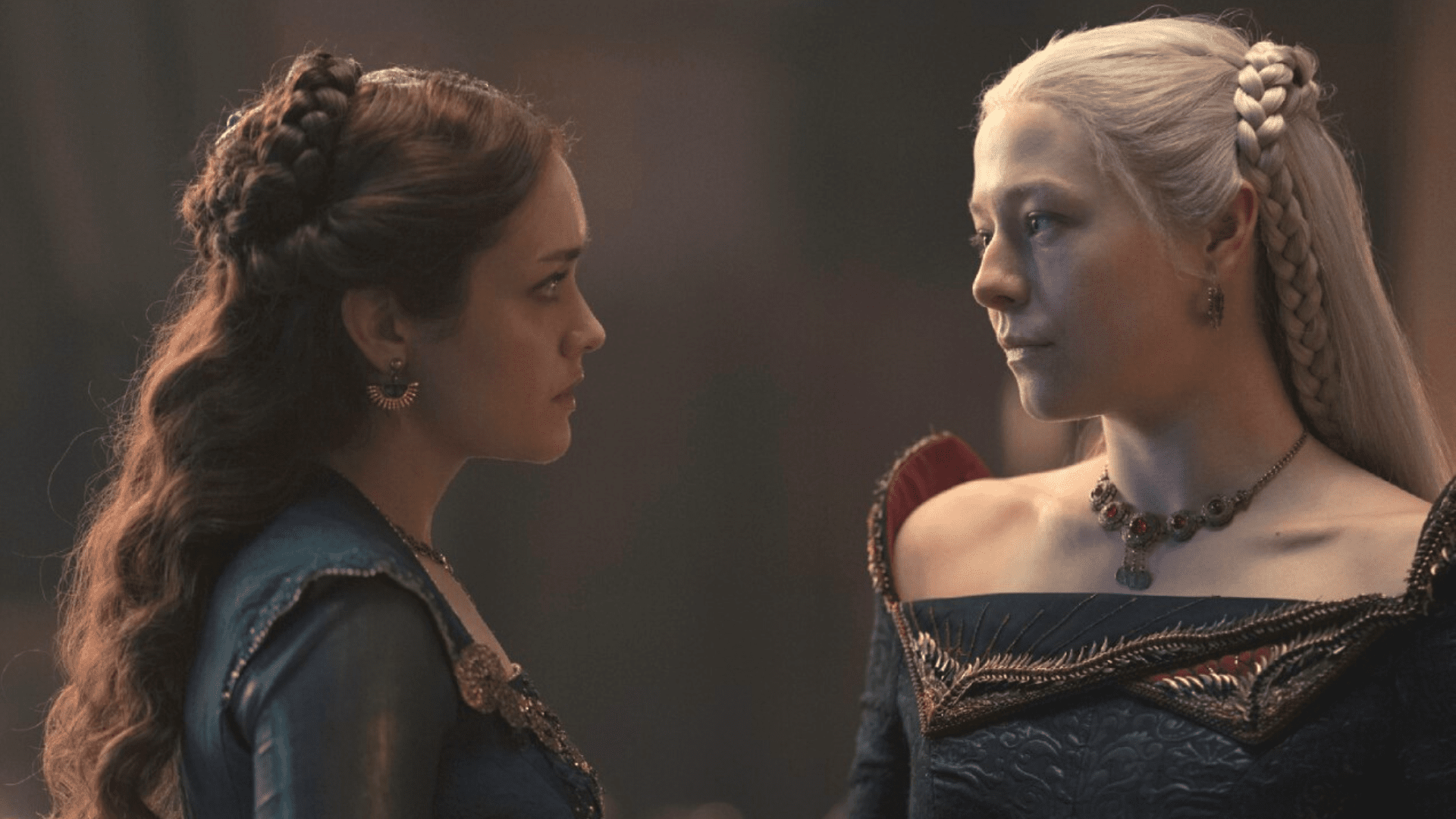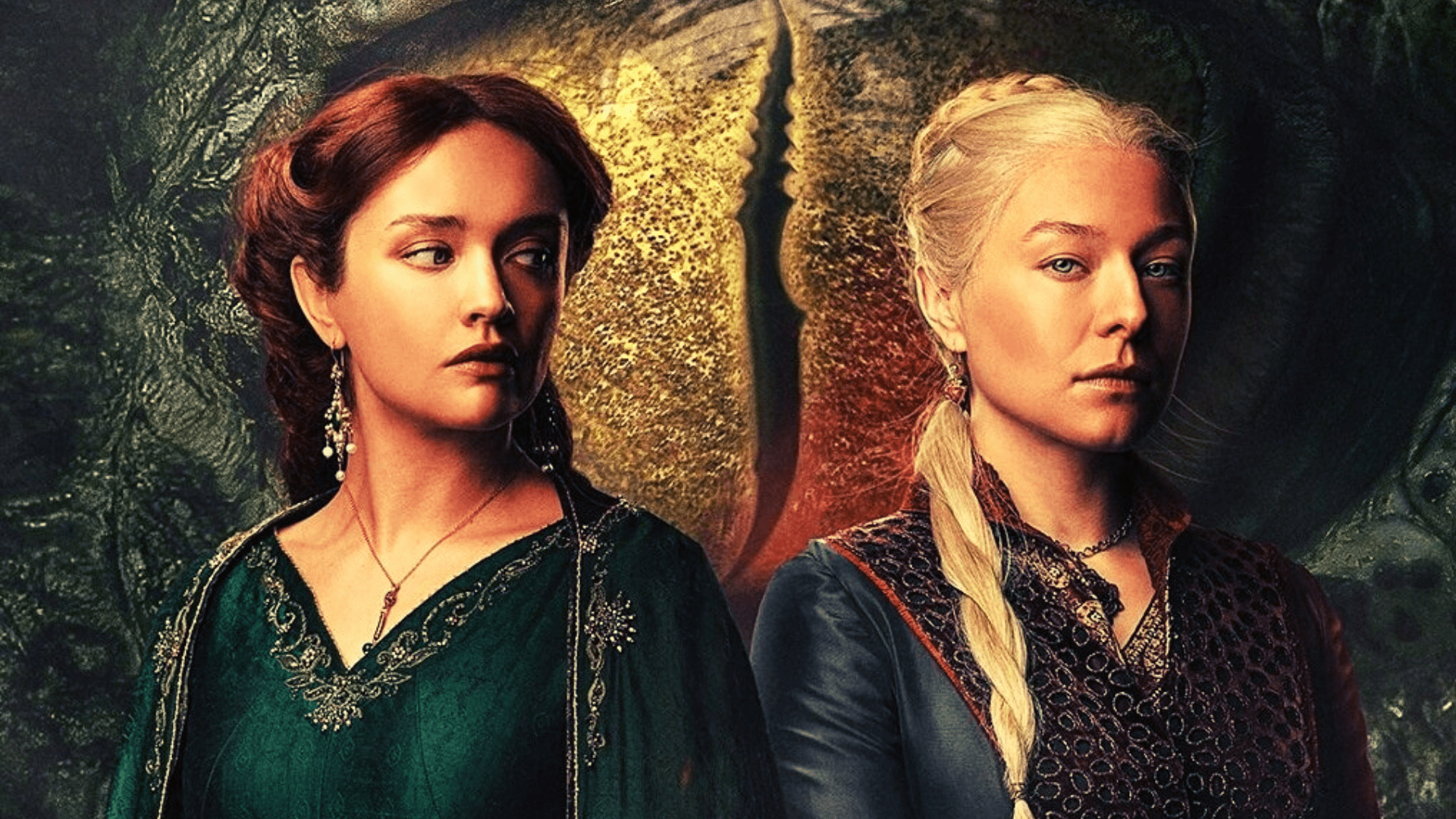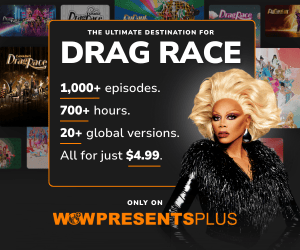House of the Dragon shows the dangers of compulsory heterosexuality
One of the central themes in House of the Dragon is what Lord Corlys describes as “the pursuit of legacy”. In many patriarchal societies, certainly the medieval Europe that inspires A Song of Ice and Fire, power is passed down by men to their male heirs, and controlling a woman’s sex life is the safest way to maintain power. House of the Dragon is about the patriarchy, yes, but it is the physical, political and cultural enforcement of heterosexuality (and the gender binary) which consolidates male power. Adrienne Rich called this phenomenon – of patriarchal institutions enforcing heterosexuality on women – “compulsory heterosexuality”. Season 1 may not have given us an explicitly queer relationship between women, but it has offered an interesting exploration of (as the kids are calling it) comp het.
Unfortunately, not everyone is on the same page about that.
If I could go back to a time when I had never seen a House of the Dragon reaction or analysis video, I’d feel like I was blissfully losing myself in an epic, high budget friends-to-enemies-to-lovers fanfiction. But of course I have seen the reactions: those that insist the women are the real villains, those that romanticise an uncle grooming his niece, most of them fumbling for any explanation but a fruity one. Queer readings of House of The Dragon aren’t just being erased, but attacked: even 19-year-old openly bisexual Emily Carey, who plays young Alicent in the show, hasn’t been able to escape. She’s recently been bullied off Twitter for ‘projecting her sexuality’ onto her character. During moments like this I’m reminded that we live in a hellscape, one in which incest is apparently more palatable than being a queer teenage girl, and a chasm between straight people’s perception and my own unfortunately persists.
At its core, House of the Dragon is a story about two gals, the Lady Alicent Hightower and the Princess Rhaenyra Targaryen, being pals. When Queen Aemma Arryn dies without giving King Viserys I a living son, he names his only daughter, Rhaenyra, heir; meanwhile the Hand of the King, Otto Hightower, manipulates his young daughter Alicent into marrying the King and displacing Rhaenyra by putting her sons (his grandsons) on the throne. The catch: Alicent and Rhaenyra are childhood friends (sweethearts really) and Alicent’s marriage to Viserys is the first of a series of painful betrayals of one another that drive the show – and the realm – towards Civil War.
In the source material, Fire and Blood, Alicent and Rhaenyra have a 9-year age gap and their animosity is never contextualised. In adapting this story, House of the Dragon showrunner Ryan Condal offers us this context: the two women were driven apart by the patriarchy. More than that, says Geeta Patel, director of episode 8 of the series says there is a “love story” between Alicent and Rhaenyra.

The actors who play Alicent and Rhaenyra are taking it further. Like hardcore gamers, these actors are grinding for the gay agenda in their interviews. Emily Carey has said that as a queer woman, she “was immediately conscious” of the sexual chemistry between Rhaenyra and Alicent when she read the script, and her co-star Milly Alcock adds that they both intended to explore, in their acting, the erotic charge that often inflects relationships between young women. Olivia Cooke and Emma D’Arcy, who play the older versions of Alicent and Rhaenyra, also agree. To them, there’s “always an erotic energy within those intense adolescent friendships”. Perhaps, then, this is not a story about gals who are more than pals, exactly. Perhaps this is a story about the inherent eroticism of gals being pals in the first place.
Alicent and Rhaenyra live under a patriarchal system, and it is established early on in the series that they feel an intense love for one another, one they can never sufficiently express. This young love is sacred to them: every emotionally intimate scene between the two in the first half of the season occurs in a religiously significant location, the Sept or the Godswood. Before she is named heir, Rhaenyra is uninterested in the rule of law, the family and the kingdom: when Alicent reads the histories to her (stories of which woman took which man to husband and sired which king), she dreams of rupturing that history to instead run away together. Mutually confined in the Red Keep, they connect with one another as only two young women who understand each other’s pain as women could. And yet the very forces that bring them together are those that tear them apart. Both Alicent and Rhaenyra experience intense pressures to enter political marriages and birth children: the gratuitous sexual violence of the original Game of Thrones series is gone, replaced with graphic scenes of childbirth to emphasise the physical trauma they are forced to experience. Overall, while Rhaenyra struggles against these forces, Alicent submits to them, repressing her desires and dedicating herself to what she is taught, by her father, to believe.
Reading compulsory heterosexuality in House of the Dragon isn’t just about reading the relationship between Alicent and Rhaenyra as sexually and romantically charged. It’s about reading heterosexuality as a tool of patriarchal power in the world of Westeros, something which is forced on women in order to subjugate them. This means it’s worth comparing how Alicent and Rhaenyra navigate the world not just to one another, but to other characters. For example, how does their unresolved queer tension compare to the one ‘explicitly’ gay character in House of the Dragon (who, interestingly, is a man)?
Rhaenyra marries Laenor Valaryon with the agreement that they can fool around with whoever they like, but it quickly becomes clear that Laenor’s freedom to fool around is not the same as Rhaenyra’s. While Laenor is free to shirk his responsibilities and galavant about with his male suitors, Rhaenyra is confined to the home, duty-bound to give birth and raise children. For Rhaenyra, patriarchy places out of reach the throne to which she is rightfully heir, and her children, bearing the sign of her infidelity in their dark hair and light skin, endanger her power more than her husband’s. Rhaenyra’s bold pursuit of her own desires – sexually and politically – is what makes her dangerous to the powers that be and as a result, herself.

Men are concerned with Rhaenyra’s sex life because their dominance is implicated. Alicent, though, is more fixated on Rhaenyra’s sexuality than anyone. As a young woman she is reluctant to marry King Viserys, which her father orchestrates in service of his own political machinations, but she consistently stands up for Rhaenyra’s claim to the throne. That is, until she learns, not that Rhaenyra is engaged to be married (a mere political arrangement) but that she has had extra-marital sex with her bloodthirsty uncle Daemond and her gallant knight, Ser Criston Cole. Worse, Rhaenyra lied to her about it.
Alicent perceives Rhaenyra to have more sexual freedom than her, and in a way, she does. In reality, Rhaenyra’s loss of virginity – like all sex, I would contend – is wrapped up in all sorts of complex power dynamics. Her first sexual experience with her uncle leaves her overpowered and abandoned; her second, immediately after, arguably takes advantage of her class position over Ser Criston. Nevertheless, this is experienced overall with a sense of adventure and youthful wonder, and is visually juxtaposed with poor Alicent pretty much dissociating as the king impregnates her. Rhaenyra is curious and playful, below Daemon then above Criston; meanwhile Alicent lies deathlike below Viserys (a painfully familiar scene to my own lesbian experience).
The complex interplay of envy and desire that can underpin relationships between women – particularly as women are encouraged to compete with one another, and might not be aware of the possibility of their attraction to other women – is certainly familiar. All the way from The Haunting of Hill House in 1959 to the infamous Black Swan 51 years later, I’d argue that a lot of darker representations of sapphic relationships are so powerful because of their exploration of these themes. In House of the Dragon, Alicent’s bitterness bubbles to the surface when she draws a knife on Rhaenyra, the object of her desire and her envy, years later. She has sacrificed a part of her own soul while Rhaenyra has experienced joy, pleasure, and a comparative degree of freedom. Alicent’s repressed desires are sublimated into a cloak of moral righteousness, which is even implied to be religious.
Now, I’m not deep enough in ASOIAF lore to know the ins and outs of the Faith of the Seven, but if the sexual morality that Alicent has internalised – that Rhaenyra is morally wrong for having sex and for bearing children out of wedlock – is anything to go by, not only is this the perfect cover for vindictive lesbiciousness, it is possibly partly the source of its repression. Formalised religion is another patriarchal institution enforcing heterosexuality, it seems. To Alicent, she has done her moral and religious duty, she has made the appropriate sacrifices for her father and her faith, and it has made her miserable. Rhaenyra, meanwhile, has often shirked these duties and is happier for it. But in the end, what is Alicent to do? What claim does she have on Rhaenyra, and what claim does Rhaenyra have on her? Her heartbroken face at the news of Alicent’s engagement to her father still tugs at my heartstrings: there is no language for this love and there is no space for it. Socially, politically, institutionally, it is not supposed to exist: it’s doomed from the start. Ironically, if the relationship between Alicent and Rhaenyra had survived, House Targaryen wouldn’t have collapsed into civil war. Perhaps patriarchy sows the seeds of its own destruction.

If I’m being totally honest, I am undeniably drawn in by those delicious queer tensions that simmer below, but never quite rise to the surface. The build up of desire, as Natalie Wynn describes it, is what tantalises me. If the popularity of period dramas or the legions of slowburn friends-to-lovers stories on AO3 are any proof, I don’t think I’m alone in this. So I genuinely enjoy this aspect of House of the Dragon, and it does feel authentic, still, to the young sapphic experiences we sometimes call ‘situationships’. You know the one: the girl you never dated, the one you never kissed, who broke your heart with every casually cruel touch or invocation of her boyfriend. The question is, what’s next for our tragic gays? How will this end for our beloved, now estranged queens?
If Olivia Cooke’s dating profile for Alicent is anything to go by, making her lead writer might be the answer, but until then, I’m not very hopeful.
House of the Dragon’s relationship to its main source, Fire and Blood, is an interesting one: the book is less a novel and more a ‘history’ of the events leading up to and during the Dance of the Dragons, an arguably misogynistic history recounted by men. The series’ potential to make queer diversions as it already has are exciting but perhaps, ultimately, limited. Alicent and Rhaenyra’s suffering likely won’t crescendo to a satisfying, queer-affirming end. In all likelihood, they will continue to suffer endlessly in the name of gritty realism, and all for nought. House of the Dragon might have less torture porn under its belt and more women in its crew, but does the world of ASOIAF – especially when we know, this being a prequel, how things will end – offer emancipatory possibility for queer women? Unfortunately I think the answer is pretty clear.
But don’t worry, that’s what fix-it fanfiction is for.







